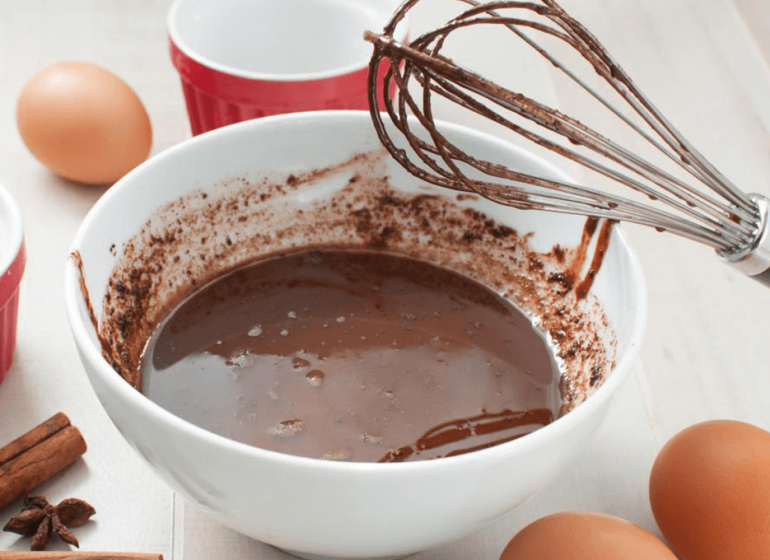These 11 tips will help you end up with moist, tender cakes and perfectly baked desserts in general.
01. Line That Pan
- Cake stuck in the pan will be of no use, no matter how delicious. Line the bottom of the pan with parchment or waxed paper, then coat the sides and bottom with soft butter and dust with flour. If you’re making a chocolate cake, use cocoa powder instead. For cakes like sponge, angel and chiffon you should skip this step as they need clean pans. Always use preformed paper or foil liner for cupcakes.
02. Measure for a Treasure
- Accurate measurement is often all that stands between light and most vs. gummy and dense. Always have a clear measuring cup with a spout, cups with flat rims in graduated sizes and a set of measuring spoons to be able to accurately measure both dry and wet ingredients. When measuring liquids, set the cup on a flat surface and bend down to ensure that your eyes are level with the lines on the cup. For dry ingredients fill the measuring cup with the ingredient and use a knife to sweep back any excess. Avoid using the measuring cup as a scoop as you’ll compact the ingredients, getting more in than required.
03. Sifting
- Always sift first and then measure as described above. Don’t skimp on sifting as it can mean the difference between a great cake and one that feels heavy. Remember to mix dry ingredients together with a whisk first before adding wet ingredients.
04. Temperature Consistency
- It might not seem like a big deal but you should always ensure that your ingredients are at room temperature before beginning. This is especially important for butter and eggs. Soft butter will easily retain its structure while trapping air at the same time during beating, which is secret to fluffy cakes. Cold butter or hot butter will ruin this and result in a flat or dense cake. Leave all ingredients out of the fridge for at least 45 minutes before starting preparation to ensure that temperatures have evened out.
05. Creaming Properly
- Creaming is beating butter with sugar for several minutes, usually about 10. This is a step often skipped or shortened especially when using a hand mixer, but this is an essential step as the structure and texture of a cake is made during this step as air is incorporated into the mixture.
06. Beating Eggs
- Beat until light and foamy and till they have lightened in colour and fall in a thick ribbon when the beater is lifted up. If eggs are to be added one at a time, make sure each one is fully incorporated before adding the next one.
07. Folding
- Adding dry ingredients to batter must be done carefully without over mixing as you don’t want to lose the air that has been trapped in the mixture. Thus, always fold and don’t stir. Use the broad side of a silicone spatula and drag it through the mixture like an oar, whilst regularly turning the bowl until everything is mixed in. It’s a slow process but your cake will thank you for it.
08. Baking
- Preheating the oven is very important. Allow at least 20 minutes for this. Best thing is to use a baking rack in the centre of the oven and rotate the position of your banking pans half-way through, once you see the cake beginning to set. Don’t open the oven door too often though as that can cause the cake to flop. Most cakes are fully baked when they pull away from the sides of the pan or when an inserted toothpick comes out dry.
09. Cooling Properly
- Set out your cake on a rack. That’ll help it cool faster and not become soggy. Leave them in the pan for about 10 to 15 minutes before removing them from the pan. Always allow to cool before frosting. Note: Angel, sponge and chiffon cakes must be left in the pan, otherwise they may collapse.
10. Cutting it into Layers
- Simply use a serrated knife to lightly make the perimeter of the cake where you’ll cut it. Then use a sawing motion to gently cut the cake into half.
11. Storage
- Unfrosted cakes can be stored at room temperature, wrapped in plastic for up to 24 hours. For longer storage, wrap them properly in plastic and foil and freeze rather than refrigerate as refrigeration causes cakes to go stale faster. For frosted cakes, keep them at room temperature under a bowl unless refrigeration is required. If the cake is cut, just use some plastic wrap to cover the exposed area to prevent drying out.

